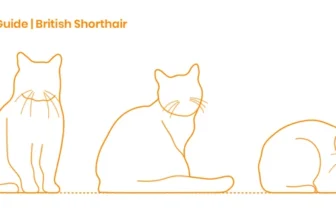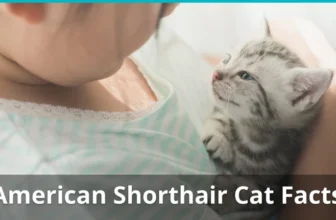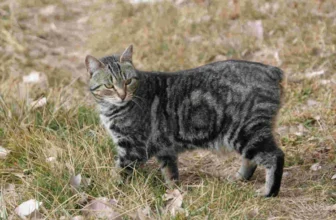As a cat owner, it can be disheartening to hear that your furry friend has been diagnosed with diabetes. While diabetes can be a serious condition, it is important to know that with proper care and management, your American Shorthair cat can still live a full and happy life. However, it can be overwhelming to know where to start. That is why we have put together this comprehensive guide, filled with tips and advice on how to care for an American Shorthair cat with diabetes. From understanding the condition to managing it at home, we’ve got you covered. So, let’s dive in and learn how to give your feline companion the best care possible.
Understanding Diabetes in Cats
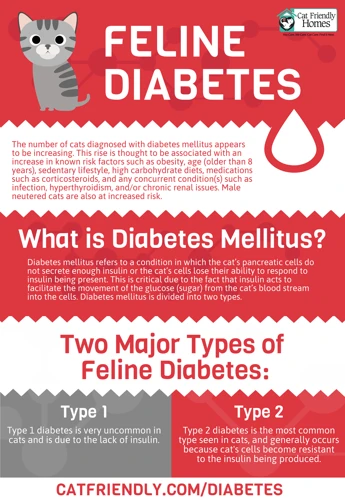
As a pet owner, it is essential to understand your cat’s health issues. One of the common health concerns among cats is diabetes, and American Shorthair cats are not an exception. Diabetes is a chronic medical condition that affects a cat’s blood glucose levels. It happens when your cat’s body cannot process insulin correctly. This article will provide you with all the information you need to know about diabetes in cats, its causes, symptoms, and risk factors. Understanding diabetes in cats will help you take the necessary steps to care for your American Shorthair and keep them healthy. To learn more about American Shorthair cats’ health issues, consult our articles on American Shorthair cats’ health issues.
What is diabetes in cats?
Diabetes is a medical condition in which the body is unable to properly regulate blood sugar levels. Similarly, in cats, diabetes is a condition that occurs when the body is unable to properly regulate glucose levels. Glucose is a type of sugar that comes from the digestion of carbohydrates in the diet. It is the primary source of energy for most cells in the body. When a cat eats, glucose is released into the bloodstream and insulin, which is produced by the pancreas, helps move the glucose out of the bloodstream and into the cells.
However, when a cat has diabetes, either the pancreas does not produce enough insulin or the cells in the body become less responsive to insulin, resulting in an accumulation of glucose in the bloodstream. This can lead to a range of health complications over time, such as damage to the kidneys, eyes, and nerve endings.
| Key Points |
|---|
| Diabetes in cats occurs when the body can’t properly regulate glucose levels. |
| Glucose is the primary source of energy for most cells in the body. |
| Insulin helps move glucose out of the bloodstream and into the cells. |
| In cats with diabetes, either the pancreas doesn’t produce enough insulin or the cells become less responsive to insulin. |
| Untreated diabetes in cats can lead to serious health complications. |
As an owner of an American Shorthair cat, it is essential to be familiar with the symptoms of diabetes in cats, to monitor their health regularly, and seek advice from a veterinarian about cat diabetes management. If you are looking for more information on how to maintain your American Shorthair’s health, check out Healthy American Shorthair Cat.
Causes and Symptoms
Diabetes is a serious health issue that affects many cats, including American Shorthairs. It occurs when the body is unable to produce or use insulin effectively, resulting in high levels of blood glucose.
Causes: The exact cause of diabetes in cats is unknown, but several factors may contribute to the development of the disease. These may include genetics, obesity, pancreatitis, and certain medications such as corticosteroids.
Symptoms: Early signs of diabetes in cats may be difficult to detect. However, as the disease progresses, symptoms become more pronounced. These may include increased thirst and appetite, weight loss, lethargy, and difficulty walking. In severe cases, cats may experience vomiting, dehydration, and even coma.
If you suspect your American Shorthair cat may have diabetes, it is important to seek veterinary care as soon as possible. Your vet can perform diagnostic tests to confirm the diagnosis and develop a treatment plan. Additionally, regular vet check-ups are crucial to managing diabetes and preventing other health issues.
Regular vet check-ups can help identify any potential health problems early on and ensure your cat receives the proper care they need. In addition to managing diabetes, American Shorthairs may be prone to genetic health issues such as arthritis, dental issues, and urinary tract problems, making regular monitoring even more important.
Remember, understanding the causes and symptoms of diabetes in cats is crucial to ensuring your American Shorthair receives the proper care and management.
Risk Factors
Diabetes in American Shorthair cats can be caused by various risk factors. One of the most significant risk factors is obesity, which may occur due to overfeeding or lack of exercise. A high-carbohydrate diet can also contribute to insulin resistance in cats. Other risk factors that can increase the likelihood of developing diabetes in cats include genetics, age, and gender. Male cats are more prone to diabetes than female cats, especially if they are neutered. Middle-aged and senior cats are also more likely to develop diabetes than younger cats. Certain medical conditions such as pancreatitis, hyperthyroidism, and Cushing’s disease can also increase the risk of developing diabetes in cats.
It is crucial to understand the risk factors that can cause diabetes in cats, as they can help prevent and manage the disease. For example, controlling your cat’s weight through regular exercise and a balanced diet can mitigate the risk of developing diabetes. You may need to choose special dietary options for American Shorthair cats with health issues. Be mindful of your cat’s overall health and monitor for signs of arthritis, allergies, urinary tract issues, and prevent dental issues in cats that can also exacerbate the development of diabetes. If you suspect your cat may have diabetes, consult your veterinarian for early detection and intervention.
Taking a proactive approach to your American Shorthair cat’s health by managing their diet, health, and lifestyle can help prevent the development of diabetes and improve your cat’s overall quality of life.
Caring for an American Shorthair Cat with Diabetes
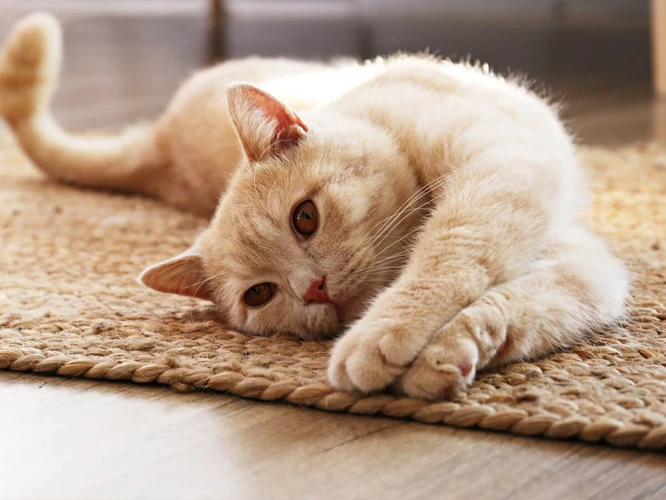
As an American Shorthair cat owner, it can be concerning to learn that your feline companion has been diagnosed with diabetes. Diabetes in cats is a serious condition that requires proper care and attention to manage. With the right treatment plan, your cat can still live a happy and healthy life. In this section, we’ll go over some tips for caring for your American Shorthair cat with diabetes, including dietary changes, insulin injections, blood glucose monitoring, exercise and play, and veterinary care. Keep in mind that managing your cat’s diabetes may also require special attention for other health issues. For more information on managing other health issues in American Shorthairs, check out our articles on dietary needs, arthritis, dental health, allergies, and urinary tract issues.
Dietary Changes
When it comes to caring for an American Shorthair cat with diabetes, one of the most important changes you can make is to their diet. Switching to a high-protein, low-carbohydrate diet can help regulate blood sugar levels and improve insulin sensitivity. Here are some dietary changes you can make for your feline friend:
| What to Include | What to Avoid |
|---|---|
| High-quality protein sources like chicken, turkey, and fish | High-carbohydrate foods like grains, potatoes, and peas |
| Fruits and vegetables that are low in sugar, like broccoli, spinach, and berries | Fruits and vegetables with high sugar content, like bananas, grapes, and carrots |
| Foods with plenty of dietary fiber, like pumpkin and flaxseed | Foods with added sugars, like flavored cat treats |
It is also important to feed your American Shorthair cat smaller, more frequent meals throughout the day to help maintain steady blood sugar levels. Consider incorporating wet food into their diet as well, as it typically has a higher protein content than dry food.
When making a dietary change for your cat, it’s important to do it slowly and gradually over a few weeks. Sudden changes in diet can cause digestive upset and lead to further health complications. Working with your veterinarian to create a tailored nutrition plan is highly recommended for managing diabetes in cats.
Insulin Injections
When it comes to managing diabetes in American Shorthair cats, insulin injections are a vital tool to regulate their blood sugar levels. Insulin is a hormone that helps cells in the body absorb glucose, which provides energy for the body. In cats with diabetes, their body either doesn’t produce enough insulin or doesn’t process it effectively, leading to high blood sugar levels.
How to Administer Insulin Injections:
Administering insulin injections at home can be intimidating at first, but with proper training from a veterinarian and practice, most pet parents are able to do it with ease. Here are some steps to follow when administering insulin injections to your American Shorthair cat:
| Step | Description |
|---|---|
| Step 1 | Choose the injection site. The most common area for insulin injections is along the back, between the shoulder blades. Rotate injection sites to prevent irritation or scarring. |
| Step 2 | Clean the area with rubbing alcohol or disinfectant. This helps prevent infections. |
| Step 3 | Draw up the prescribed amount of insulin into the syringe. |
| Step 4 | Gently pinch the skin between your American Shorthair cat’s shoulder blades and insert the needle at a 45-degree angle. |
| Step 5 | Depress the plunger to inject the insulin, then pull the needle out at the same angle it was inserted. |
| Step 6 | Dispose of the used syringe and needle properly. |
Things to Keep in Mind:
– Be sure to administer the correct amount of insulin as prescribed by your veterinarian.
– Consistency is key. Try to administer insulin injections at the same time every day.
– Monitor your American Shorthair cat’s blood sugar levels regularly and adjust insulin doses as needed.
– If you miss a dose or give too much insulin, contact your veterinarian right away.
– Always handle insulin and syringes with care and dispose of used needles properly to prevent injury or infection.
Blood Glucose Monitoring
One of the key aspects of caring for an American Shorthair cat with diabetes is ensuring proper blood glucose monitoring. Monitoring your cat’s blood glucose level regularly can help you keep track of their condition and adjust their treatment plan as necessary. Regular monitoring also helps you identify potential complications early on, enabling you to seek veterinary care in a timely manner.
How to Monitor Blood Glucose Levels in Cats:
There are several ways to monitor blood glucose levels in cats, including:
| Method | Pros | Cons |
|---|---|---|
| At-Home Blood Glucose Testing | Convenient and can be done at home; allows frequent monitoring; helps detect changes in blood glucose levels | May be difficult to obtain blood sample; results may vary depending on type of test used; can be expensive |
| In-Hospital Testing | Results are more accurate and reliable; trained veterinarians can interpret results | May be stressful for cats; may be more expensive; may not allow for frequent monitoring |
Tips for Blood Glucose Monitoring:
When monitoring your cat’s blood glucose levels, it’s important to follow these tips for accuracy:
– Use a glucometer specifically designed for cats
– Always use a clean and sterile lancet for each blood sample
– Use the same testing site (e.g. ear, callus pad) consistently for accurate comparison of results
– Test at consistent times throughout the day to establish a routine for your cat’s care
– Record and track results to share with your veterinarian
By monitoring your American Shorthair cat’s blood glucose levels regularly and accurately, you can help ensure their diabetes is properly managed and maintain their overall health and well-being.
Exercise and Play
Maintaining an exercise routine for your American Shorthair cat with diabetes is vital for managing their condition. However, it is important to consult with your veterinarian before starting any exercise plan. Here are some tips to help you get started:
- Low-impact exercise: Opt for low-impact activities that won’t put too much strain on your cat’s joints. Some examples include light playing with toys or a laser pointer, or even walking your cat on a leash if they enjoy it.
- Regular playtime: Schedule regular play sessions throughout the day to help your cat get some physical activity. This not only helps regulate their blood sugar levels but also promotes overall well-being.
- Observe your cat: Keep a close eye on your cat during exercise and playtime to ensure they are not getting overly tired or experiencing any discomfort.
- Avoid high-intensity exercise: High-intensity exercise, such as running or jumping, should be avoided as it can cause stress to the cat’s body and trigger a spike in blood sugar levels.
Remember to always monitor your cat’s blood sugar levels before and after exercise to determine the amount of insulin they may need. Exercise can be a fun and healthy way to manage your American Shorthair cat’s diabetes, as long as it’s done in a safe and controlled manner.
Veterinary Care
Cats with diabetes require regular veterinary care to ensure their condition is well-managed and under control. Regular check-ups and testing are essential for monitoring the effectiveness of treatment, as well as detecting any potential health issues that may arise.
The following table outlines the recommended veterinary care for American Shorthair cats with diabetes:
| Frequency | Care |
|---|---|
| Every 3-6 months | Physical examination and blood work to monitor glucose levels and overall health |
| Every 6-12 months | Eye examination to check for cataracts and other diabetic-related eye conditions |
| As needed | Urine tests to monitor kidney function and check for urinary tract infections |
| As needed | X-rays or ultrasounds to check for any potential complications, such as liver disease or pancreatitis |
It’s important to establish a good relationship with your veterinarian and work closely with them to manage your cat’s diabetes. Be sure to communicate any changes in your cat’s behavior or health to your vet, as this can be an indication that the diabetes is not well-controlled or that other health issues are present. Also, follow any instructions that your veterinarian provides carefully, including administering medication and testing your cat’s glucose levels at home. By working together, you can help your American Shorthair cat with diabetes lead a happy and healthy life.
Tips for Managing Diabetes in Cats at Home
Managing diabetes in cats can be a challenging task, and it requires a great deal of commitment and care. Providing daily insulin injections, monitoring your cat’s glucose levels, and adjusting their diet can seem overwhelming at times. However, with some helpful tips and techniques, you can make diabetes management at home a more comfortable experience for both you and your feline companion. Here are some actionable tips that you can implement to make caring for your American Shorthair cat with diabetes at home more manageable.
Establishing a Routine
Establishing a routine is essential in caring for an American Shorthair cat with diabetes as it helps regulate their insulin levels and ensures that their diet and exercise are consistent. Here are some tips for creating a routine:
| Tip | Explanation |
|---|---|
| Set a feeding schedule | Feed your cat at the same time every day, ideally 12 hours apart. This helps regulate their insulin levels. |
| Administer insulin injections at the same time | If your cat requires insulin injections, make sure to administer them at the same time every day, ideally 30 minutes before their scheduled meal. |
| Establish an exercise routine | Schedule playtime with your cat at the same time every day. This can include playing with toys or taking them for short walks on a leash. Exercise helps regulate their blood glucose levels. |
| Keep a log of your cat’s routine | Record their feeding, insulin injections, and exercise routine in a notebook or on your phone to ensure consistency and monitor their progress. |
By establishing a routine, you can help your American Shorthair cat with diabetes lead a more stable and healthy life. It’s also important to consult with your veterinarian about your cat’s specific needs and routines.
Managing Stress Levels
Managing stress levels is crucial for cats with diabetes as stress can cause changes in blood sugar levels. Here are some tips for helping your American Shorthair cat manage stress:
- Create a Calm Environment: Cats are highly sensitive to their surroundings and can easily become stressed. Consider providing a quiet, calm space for your cat to retreat to, away from loud noises and other pets.
- Offer Play and Entertainment: Interactive playtime and puzzles can help stimulate your cat’s natural instincts and prevent boredom, which can lead to stress. Consider adding puzzle toys or play sessions to your cat’s routine.
- Stick to a Routine: Routine is important for cats, and any changes to their routine can be stressful. Stick to regular feeding times, playtime, and bedtime to help your cat feel more secure.
- Provide Comfort: Comfort items, such as a favorite blanket or bed, can help your cat feel safe and secure. Consider providing a cozy hiding spot for your cat to retreat to when they feel stressed.
- Use Pheromones: Pheromones are synthetic versions of the chemicals that cats produce naturally to communicate with each other. These can help create a calming environment that can reduce stress levels in cats.
By following these tips, you can help your American Shorthair cat manage stress and prevent any negative impacts on their diabetes management. Remember, a calm and stress-free environment is crucial for diabetic cats to maintain stable blood sugar levels.
Hiring a Pet Sitter
Hiring a Pet Sitter
If you are unable to be home to care for your American Shorthair cat with diabetes, hiring a pet sitter may be the best option for you. Here are some things to keep in mind when looking for a responsible and reliable pet sitter:
- Choose a sitter with experience in administering medications, including insulin injections
- Ask for references and check them thoroughly
- Ensure that the sitter is knowledgeable about feline diabetes and knows what to do in an emergency
- Provide detailed instructions for feeding, administering medication, and testing blood glucose levels
- Make sure the sitter has all necessary emergency contact information, including your veterinarian’s phone number and address
- Consider a trial run with the sitter before leaving your cat for an extended period of time to ensure that both your cat and the sitter are comfortable with the arrangement
Remember, hiring a pet sitter can alleviate stress for both you and your American Shorthair cat with diabetes, as you can rest assured that your cat is in good hands while you are away.
Creating a Safe Home Environment
Ensuring a safe home environment is crucial for cats with diabetes. Here are some tips to keep in mind:
| Tip | Description |
|---|---|
| 1. Keep Insulin and Supplies Secured | Insulin and other diabetes supplies should be kept in a safe and secure location, away from curious pets. This also helps prevent accidental insulin dosages. |
| 2. Eliminate Hazardous Household Items | Cats with diabetes may be more at risk for injuries due to complications from their condition. Keep hazardous household items such as cleaning products, sharp objects, and small toys out of reach. |
| 3. Provide Easy Access to Litter Box | Make sure your cat’s litter box is easily accessible and located in a quiet and stress-free area. This is especially important for diabetic cats who may need to use the litter box more frequently. |
| 4. Create a Comfortable Environment | Ensure that your cat has a comfortable and cozy environment to relax in. Provide soft bedding and consider adding a heated cat bed to help keep their body temperature regulated. This can also help with any joint or muscle pain associated with diabetes. |
By keeping insulin and other supplies secure, eliminating hazardous household items, providing easy access to the litter box, and creating a comfortable environment, you can help ensure that your diabetic cat is safe and happy at home. Remember to also monitor your cat’s behavior and make adjustments as needed to ensure a safe and healthy environment.
Conclusion
In conclusion, managing diabetes in an American Shorthair cat requires diligence, dedication, and a willingness to make lifestyle changes. It’s important to work closely with your veterinarian to develop a comprehensive management plan that includes dietary changes, insulin injections, blood glucose monitoring, exercise, and regular check-ups.
Owners of diabetic cats must also be proactive in managing their pet’s stress levels, establishing a routine, and creating a safe home environment. Diabetes is a chronic condition that requires ongoing care, but with the right tools and support, it is possible to provide a happy and healthy life for your furry friend.
Remember to always monitor your cat’s behavior, appetite, and energy levels, and to attend all scheduled vet appointments. With a little patience and commitment, you can help your American Shorthair cat with diabetes thrive and live life to the fullest.
Frequently Asked Questions
1. Can American Shorthair cats get diabetes?
Yes, just like any other breed of cat, American Shorthairs are susceptible to developing diabetes.
2. What are the symptoms of diabetes in cats?
Common symptoms of diabetes in cats include increased thirst and urination, weight loss, lethargy, and poor coat quality.
3. How is diabetes in cats diagnosed?
A veterinarian can diagnose diabetes in a cat through a physical exam, blood tests, and urine tests.
4. Can diabetes in cats be cured?
Diabetes in cats cannot be cured, but it can be managed with proper treatment and care.
5. Do American Shorthair cats require a special diet if they have diabetes?
Yes, cats with diabetes require a special diet that is high in protein and low in carbohydrates.
6. How often should a cat with diabetes be given insulin injections?
The frequency of insulin injections for a cat with diabetes will depend on their specific case and will be determined by a veterinarian.
7. Can I monitor my cat’s blood glucose levels at home?
Yes, blood glucose levels can be monitored at home using a glucose meter and test strips. It is important to consult with a veterinarian on proper testing procedures.
8. Should I limit my cat’s exercise if they have diabetes?
No, exercise is important for cats with diabetes, but it should be done in moderation and under the guidance of a veterinarian.
9. Can stress affect a cat’s diabetes?
Yes, stress can affect a cat’s diabetes and should be managed to help control their condition.
10. Can I leave my diabetic cat alone for long periods of time?
It is not recommended to leave a diabetic cat alone for long periods of time, as they require regular insulin injections and monitoring of their condition.




